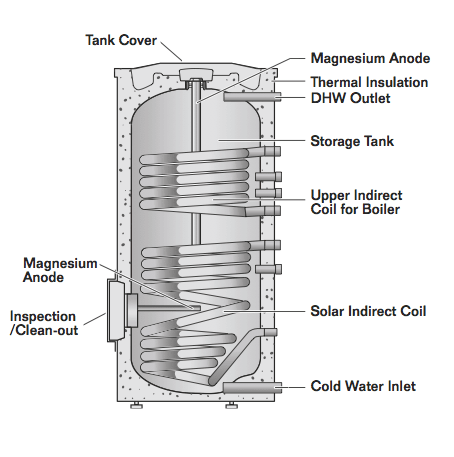If you’re searching for a productive way of decreasing your monthly power bill you might want to consider a DIY solar water heater. And without any second thought, a solar water heating system is certainly the most affordable way of lowering your utility bill.
Most homes in Northern America use energy worth of $1,200 per year, which entails that there’s definitely something need to be done to reduce the fiscal burden. Almost 18 percent of the power you employ us devoted towards the heating water, which entails that fitting a DIY solar water heater could save you something significant.
However, there are quite a few things you need to consider in order to improve the performance of your DIY solar water heater. Let’s find out what are they:
The size of the solar water tank:
Bigger isn’t always better, but in case of the storage tank, it definitely is. A bigger solar water storage tank maintains its water warmer for a considerable amount of time because of a property is known as thermal inertia. So, the larger your tank is, the more you’ll have in the bank to cover up many cloudy days & approaching cold waters will have a negligible impact when you pull out hot water. And this the best advantage of a DIY solar water heater over a commercial unit as you can upsize your storage tank without spending too much.

The Surface Area of the Solar Collectors:
This is a very obvious factor as the larger the collector area the more volume of water you’ll be revealing to the sun’s heat. Once again, the DIY solar water heater system has a plus over the commercial ones as you have the luxury to expand the size with a negligible increase in effort and material expense.
Collector materials used:
Typical solar collectors feature copper tubing affixed to a copper heat soaking fins since this offers the optimal thermal performance at a hefty cost. However, DIY solar water heater collectors can be built at a much lower price; employing copper tubes allied to aluminum fins & acquire nearly the same performance.
Insulation in solar water tank & piping:
It is essential to insulate the water tank perfectly because the reserve heat lost the longer the waters will remain warm & the less the DIY solar water heater unit has to run to produce heat again.
Proper location: Your DIY solar water heater collectors must be placed in a place where it’ll get as much exposure to the sun as feasible and that entails making certain that obstacles like trees are considered prior to deciding on where to place them.
Keep these above-mentioned points in mind and you will definitely be able to make the most of your homemade solar water heater system. Good luck!

